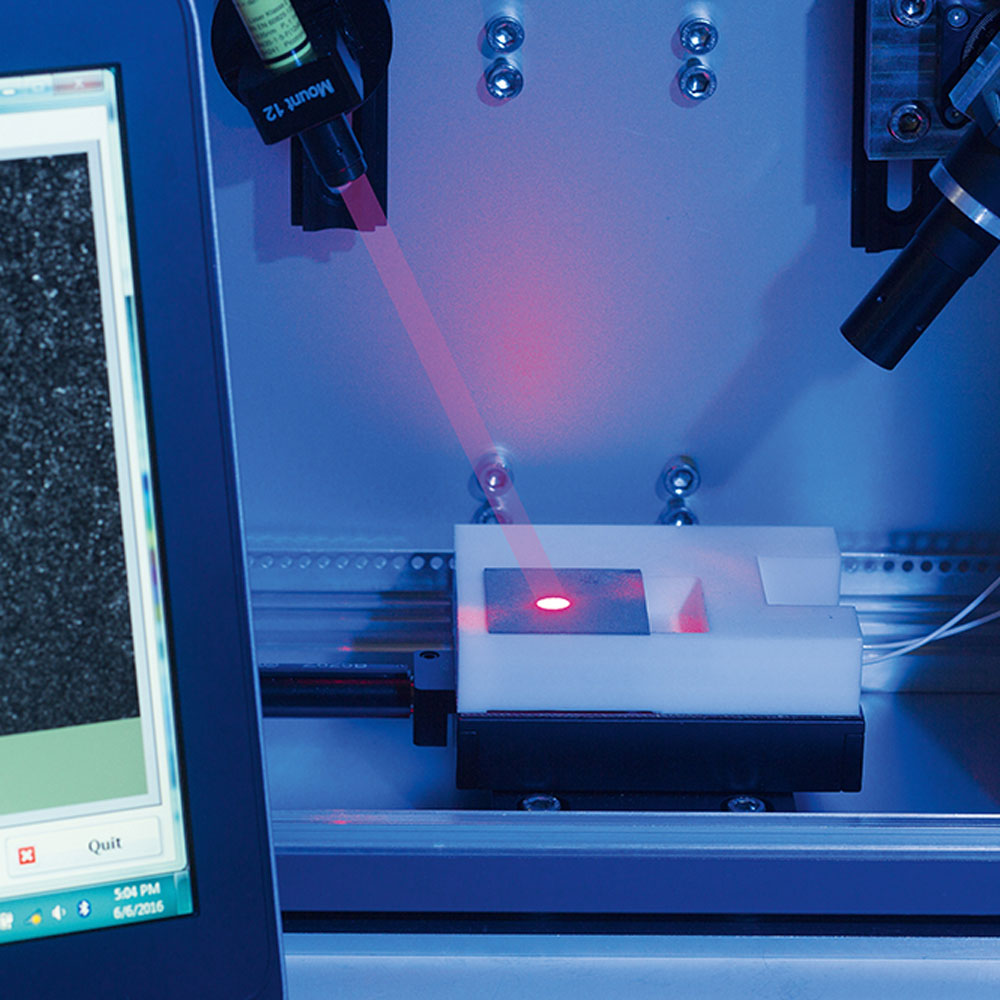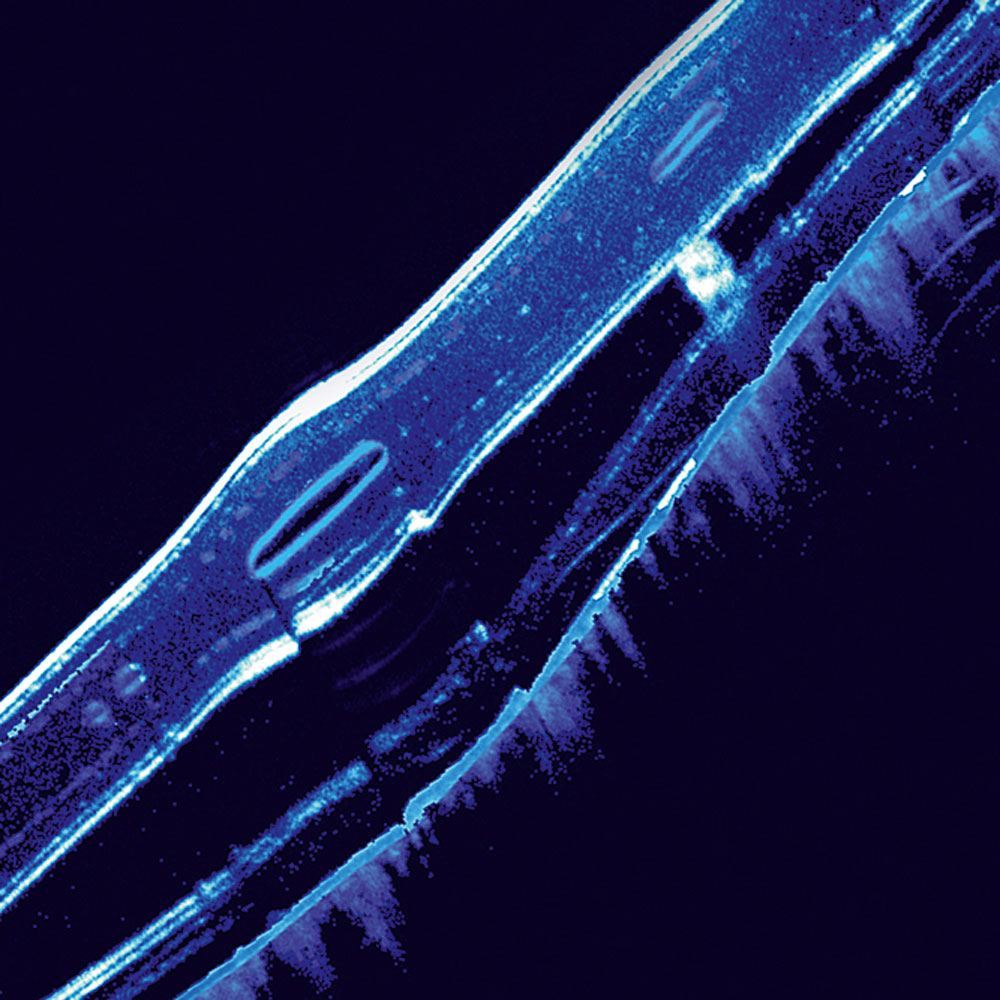
Optical methods

Laser speckle photometry
Time-resolved laser speckle photometry (LSP) is a new method that was developed at Fraunhofer IKTS to characterize part surfaces. It is based on evaluation of the temporal changes in speckle patterns formed due to mechanical or thermal excitation of the test objects. Excitation can originate from the process itself (e.g., heat generated by welding) or through deliberate input (e.g., of heat or mechanical stresses) during testing.
The non-contact method is characterized by a simple, robust design and low costs compared with those of competing measurement methods. The extremely short measurement times predestine it for in-line use in industrial production and for in-situ measurements within the scope of maintenance and repair work.
Laser speckle photometry is highly sensitive to out-of-plane and in-plane displacements. Compared with other techniques that concentrate on the distortion of the overall speckle patterns or of the fringes, laser speckle photometry measures the spatial and temporal dynamics of the speckles produced by changes in intensity of each pixel in the camera sensor. The interaction between the speckle dynamics and the specimen condition can be described by a correlation function. A customer-specific correlation model based on reference values, process conditions, and material characteristics is used to determine properties such as porosity, stresses, and defects.
Technical details
- Can be used on all non-reflecting materials
- Test chamber size: no restrictions, homogeneous illumination of areas of up to 100 x 100 mm, larger areas are examined by scanning
- Lateral resolution: 10 μm (metals) to 100 μm (ceramics)
- Measurement speed: 20 measurements/second, 30 images/minute
Application fields
- Process monitoring of rapid manufacturing processes, e.g., in-line materials characterization in additive manufacturing processes
- Structure monitoring (stresses and defects)
- In-line monitoring of biotechnological processes
Services offered
- Development of customized LSP-based testing systems
- On-site measurement services
- Measurement of electronic component geometries
- Contract research
Optical coherence tomography
At Fraunhofer IKTS, optical coherence tomography (OCT) is used for three-dimensional detection and imaging of structures in various materials such as ceramics, plastics, glasses, glass fiber-reinforced plastics, and biological materials. The noninvasive tomographic imaging method enables visualization of the surface topographies and internal structures in scattering media. For this, the object to be investigated is irradiated with a low-coherence near-infrared light source and the scattered light is processed by a spectroscopic method.
OCT allows testing to be done in real time without direct contact with the specimen. Another advantage of OCT is its high measurement speed, which enables bulk specimens to be investigated in a matter of seconds. These advantages qualify it as an efficient, low-cost method for in-line defect detection (e.g., seal seam inspection) as well as for foreign object detection in bulk materials in various branches of industry. The measurement method can be adapted to diverse applications and optimized for specific requirements.
Technical details
- 3D imaging method for semi-transparent materials
- Measurement area: 40 x 40 cm
- Resolution: < 10 μm
- High penetration depth: 1–3 mm
- High axial resolution: 0.5–15 μm
- Non-invasive, non-contact measurement method
- No ionizing radiation
- More than 30 cross-sectional images per second
Application fields
Product testing and process monitoring for:
- Plastics and packaging industry
- Ceramics industry
- Electronics industry
- Additive manufacturing methods
- Food industry
- Roll-to-roll processes
Services offered
- Static and dynamic layer thickness measurement
- Three-dimensional structure visualization (surface and internal structure)
- Development of customized testing systems
- Improvement of measurement algorithms and image analysis
- I ntegration into existing systems

Privacy warning
With the click on the play button an external video from www.youtube.com is loaded and started. Your data is possible transferred and stored to third party. Do not start the video if you disagree. Find more about the youtube privacy statement under the following link: https://policies.google.com/privacyProcess monitoring with Laser Speckle Photometry – fast, accurate, non-contact, non-destructive.

